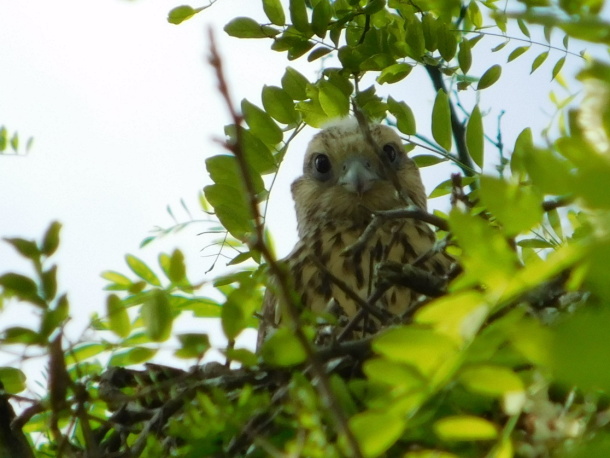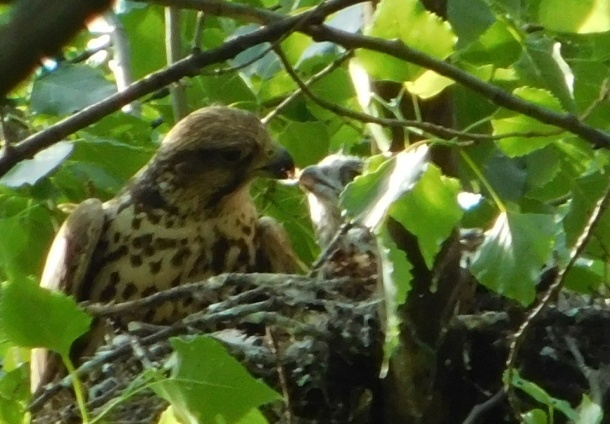Monitoring the Saker falcon in 2015

The Saker falcon is a medium-sized bird of prey. Despite its size, monitoring can actually be very difficult. The Saker falcon is a master of hide and seek and spends most of its time hidden. If it’s successful at hunting -which can be done up to 7km away from its nesting site- it may only need to hunt once a day, leaving researchers with little opportunity to spot it over its vast hunting grounds. If that didn’t make it difficult enough, across the vast agricultural landscape of South Moravia, nesting couples are also known to regularly change their breeding grounds, so it is necessary for researchers to look for new nesting sites every year.
This year, intensive monitoring of the Saker falcon began in mid-February and finished in most areas around the end of June. Despite the fact that more than 1000 hours were spent on monitoring, only four nests of this rare bird were found. At the same time, over 750 suitable nesting sites were also monitored. In additional to the four pairs, another five were seen within the monitoring area, but unfortunately their nests could not be found, yet it is possible that some pairs did not nest.
With this monitoring, we can say that the Saker falcon is still one of the rarest birds in the Czech Republic, with is population not exceeding 20 breeding pairs.

We have been monitoring the Saker falcon in the Czech Republic for several years. This year, monitoring took place as part of the project “Preparing a rescue program for the Falco cherrug” financed from EEA funds.


